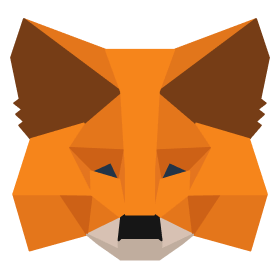Connect
Log in by connecting your wallet.

Haven’t got a crypto wallet yet?
A decentralized autonomous organization, or DAO, is a type of organization that operates on blockchain technology and is governed by smart contracts. DAOs are run by a set of rules encoded as computer programs, called smart contracts, which are stored on a decentralized network of computers, called a blockchain. These smart contracts are self-executing and enforce the rules of the DAO, making them highly transparent and resistant to tampering.
DAOs work by allowing members to vote on proposals and make decisions collectively. Members are typically represented by tokens, which they use to vote on proposals. Proposals are then executed automatically by the smart contracts, ensuring that they are carried out in a fair and transparent manner.
If you're interested in participating in a decentralized autonomous organization, the first step is to find one that aligns with your values and goals. This can typically be done by searching for DAOs on blockchain-based platforms, such as Ethereum or Binance Smart Chain.
Once you've found a DAO that you're interested in, you'll need to purchase its token, which you can use to vote on proposals and participate in the organization. It's important to thoroughly research the DAO and its governance structure before making a decision, as this will help you understand how the organization operates and what kind of impact your vote will have.
It's important to understand the governance structure of a DAO before participating in it. The governance structure will determine how decisions are made and how proposals are put forward. Some DAOs have a hierarchical structure, where decisions are made by a small group of members, while others have a more decentralized structure, where all members have an equal say.
Additionally, it's important to understand the voting system used by the DAO. Some DAOs use a simple majority vote, where the proposal with the most votes wins, while others use a weighted voting system, where certain members have more voting power based on their contributions to the organization.
One of the main benefits of decentralized autonomous organizations is their transparency. Because DAOs operate on a decentralized network, all transactions and decisions are publicly available for anyone to see. This helps to ensure that the organization operates in a fair and transparent manner and helps to prevent any potential conflicts of interest.
Another benefit of DAOs is their resistance to tampering. Because the rules of the organization are encoded as smart contracts and stored on a decentralized network, they are resistant to tampering and cannot be altered without the consent of the members. This makes them much more secure than traditional organizations, which are susceptible to manipulation and tampering.
Despite their many benefits, there are also some risks associated with decentralized autonomous organizations. For example, DAOs are vulnerable to hacking and other types of cyberattacks, which could result in the loss of funds. Additionally, because DAOs are run by code, they may not always be able to accurately account for human error or unforeseen circumstances, which could result in unintended consequences.
Despite the benefits and potential of Decentralized Autonomous Organizations, there are still several challenges that need to be addressed in order to make them more widely adopted and successful. Some of these challenges include:
One of the biggest challenges facing Decentralized Autonomous Organizations is scalability. The current infrastructure of these organizations is not capable of handling the high volume of transactions that are required for them to function effectively. This has led to slow transaction times and high fees, making it difficult for these organizations to scale and reach their full potential.
Decentralized Autonomous Organizations operate in a largely unregulated space, which has led to concerns about security, privacy, and accountability. As these organizations become more widely adopted, it is likely that regulators will step in and put in place rules and regulations to govern their operations.
Decentralized Autonomous Organizations are built on blockchain technology, which makes them secure by design. However, there have been instances where Decentralized Autonomous Organizations have been hacked or compromised, resulting in the loss of funds for their users. This highlights the importance of ensuring the security of these organizations and the need for better security measures to be put in place.
Despite their potential, Decentralized Autonomous Organizations are still not widely adopted by the general public. This is partly due to a lack of understanding of how they work, as well as concerns about security and regulation. To overcome this, it is important for Decentralized Autonomous Organizations to educate the public and provide easy-to-use interfaces that make it simple for people to get involved and participate.
To sum up, Decentralized Autonomous Organizations offer several benefits over traditional centralized organizations. By allowing for decentralized decision-making and enabling the participation of a large number of people, they have the potential to revolutionize how businesses make decisions. However, there are still several challenges that need to be addressed, including scalability, regulation, security, and adoption. Nevertheless, with continued development and innovation, Decentralized Autonomous Organizations have the potential to play a major role in shaping the future of the global economy.




